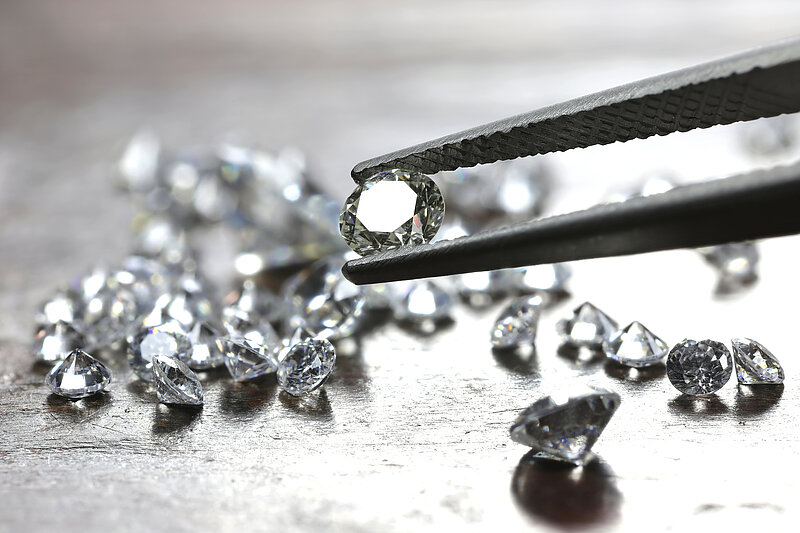Brilliant Business - The Next Generation of Diamond
Through technological progress it is now possible to make the impossible feasible and many unthinkable things could be realized in recent years. Whereas 15 years ago we were still thrilled by the CD player, today we ask our music system to play our favorite song. Robotic vacuum cleaners and mowers now do our work in the home and garden, navigation systems guide us to the furthest corners of our planet, and who would have thought ten years ago that a car weighing tons could be plugged in to charge and then have the energy ready to drive?
Thus, even pure diamond was long considered the most difficult product in the world to produce. It took over 150 years to produce a diamond by means of metallic catalysts, so that chemical and physical properties correspond to those of naturally mined diamonds. Since 1955, the industry has benefited from the cheaper alternative - diamond grains produced in the laboratory by synthesis. Only in the last two decades has it become possible to present the first gem-quality diamonds produced in the laboratory, and the technology for their manufacture has also been steadily improved.
Manufacturing Methods:
There are two methods to manufacture laboratory diamonds: HPHT and CVD. The first method "high pressure, high temperature" uses high pressure and high temperatures. The second method "chemical vapor deposition" grows diamonds layer by layer in a plasma reactor. A gas mixture is used from which the carbon is deposited.
The new trend:
While lab-grown diamonds have long been a staple in the industry, they are now increasingly winning over well-known jewelry manufacturers. According to statements by consulting firm Bain & Company, global production of lab-grown diamonds has grown to between six and seven million carats, while production of natural diamonds has fallen from 152 million carats in 2017 to 111 million carats in 2022. Global jewelry companies, such as "Pandora", are advertising to switch completely to the ethically pure diamonds from the laboratory. Leonardo Di Caprio, for example, has invested in the next generation of diamond, signaling that he no longer wants to exploit the environment or people. At Ceratonia, we too are convinced of the ethically pure and conflict-free diamonds. That is why we have now established Ceratonia Created Diamonds in excellent quality in our product range for jewelry manufacturing. Ceratonia Created Diamonds are cut after production in our cutting room according to the highest quality standards and are certified at the respective institutes just like the natural ones.
Created Diamond - Sustainable alternative to conventional diamonds:
- Sustainable: The manufacturing process is particularly efficient and resource-saving, thanks to the latest technology.
- Conflict-free: The origin is clear, 100% conflict-free and does not include any inhumane working conditions.
- Affordable: lab diamonds are priced at about 70% of natural diamonds. Larger diamonds are more affordable than ever before.
However, disadvantages of synthetic diamonds can also be found. For example, they do not come close to the uniqueness of natural diamonds. After all, their formation is not nearly as fascinating and spectacular as that of natural gemstones, which were formed over millions of years under high pressure. Moreover, their value is less stable. In fact, since synthetic diamonds could be produced in unlimited quantities, their value is expected to decrease in the long run. Especially for those who use diamonds as an investment, this is a disadvantage.
Diamonds as an investment:
As a safe investment in times of crisis, the conventional natural diamond has proven itself for decades. There are a few basic things to keep in mind: The value of a diamond is largely determined by the 4C's (Color, Clarity, Carat, Cut). Investors should always look for excellent quality.
More on the subject of investment diamonds in the next issue 1/23 Stay tuned!
![[Translate to English:] InDiamond.world](/fileadmin/_processed_/a/1/csm_InDiamond_Logo_2021_1fb017de30.png)
